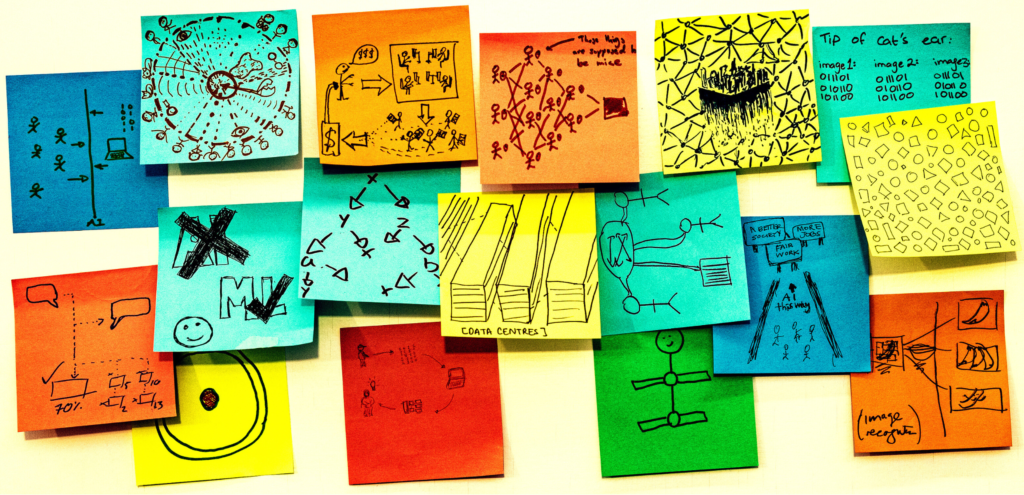
Rick Payne and team / Better Images of AI / Ai is… Banner / CC-BY 4.0
You have probably heard of the term artificial intelligence, which is often shortened to AI. But have you really stopped to think about what it actually means?
If you look it up in the Oxford English dictionary it will tell you that it is “the theory and development of computer systems able to perform tasks normally requiring human intelligence, such as visual perception, speech recognition, decision-making, and translation between languages.” So when any technology can do a task traditionally done by humans, it can be badged as AI. It’s a pretty wide definition!
It’s also easy to think of AI as a new phenomenon – given very recent innovations. But it has a long history. The term ‘Artificial Intelligence’ is attributed to John McCarthy, who defined it in 1956 as “the science and engineering of making intelligent machines.”
We’ll learn more about the history since this point later in the study pack. For now, this video will explain 5 things that you really need to know about AI:
If you are not studying a subject where you will directly learn about AI, you might be a little overwhelmed by all the different terms that are used. We have included a section that provides useful terminology to help with this.
You might not have any strong feelings about AI, but you might also be feeling overwhelmed, or excited, or anxious, or confused. However you feel, it’s perfectly normal! The media often talks about AI as something that is either absolutely amazing or extremely concerning, but not the reality which is probably somewhere in between. You will be able to explore your own feelings about AI later on the study pack.
Generative AI
Most of the content in this study pack focusses on a specific type of AI known as generative AI. We will be focusing on generative AI for the most part in this Self Study Pack, as these tools are more applicable to the kinds of tasks performed within Higher Education.
Examples of generative AI tools include ChatGPT, Microsoft Copilot, Google Gemini and Perplexity. Generative AI tools create content in response to what is known as a prompt.
A prompt is the instruction that you give to an AI tool to generate an output. It essentially serves as a starting point for AI to produce information. We explore how to write an effective prompt here: Prompt Engineering.
The content these tools produce might be text, image, music or video. To decide whether a tool is a generative AI tool, ask yourself – does this tool create some kind of content? If it does, then it is generative AI.
Some tools have multiple functions, so you might need to think about the specific thing you are using it for. For example, Grammarly is a tool that is primarily a spelling and grammar checker, but it also has some generative AI writing features. So if you enter some text to check, you are using a broader AI tool. But if you enter a prompt to create some new text, you are using generative AI.
Generative AI tools are relatively new and they can be a helpful tool to use in your studies. But there are also some risks that you need to be aware of. In the next section we will examine some of the things that you need to consider when using generative AI tools.






